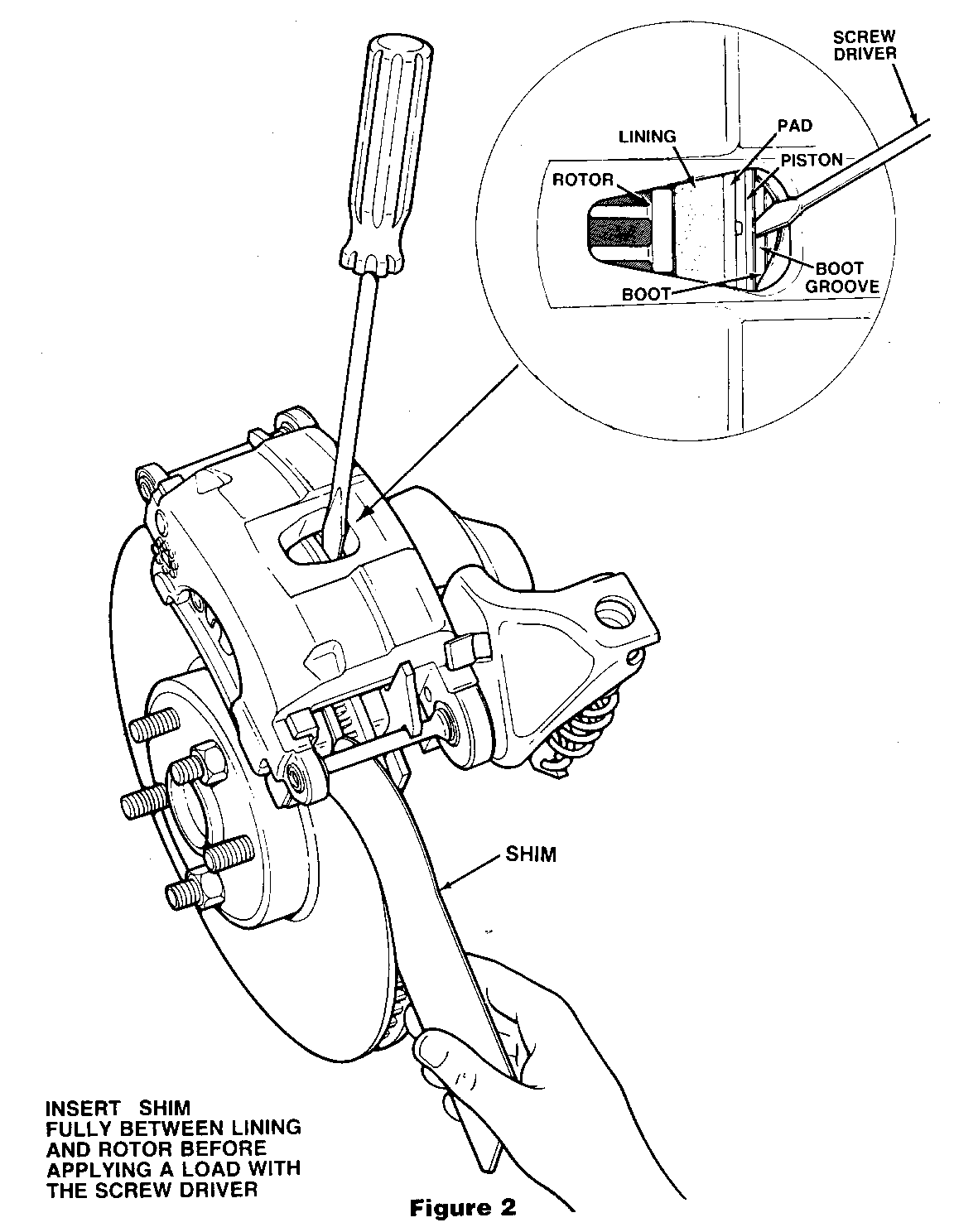REAR CALIPER PARK BRAKE SERVICE ADJUSTMENT PROCEDURE

REAR CALIPER PARK BRAKE SERVICE ADJUSTMENT PROCEDURE
Models Affected 1982-88 FIREBIRD, 1984-87 FIERO --------------- AND 1984-88 6000 STE
The 1982-88 Firebird, 1984-87 Fiero, and 1984-88 6000 STE vehicles with the rear disc brake calipers are designed to automatically adjust. Some vehicles may experience increased rotor to lining clearance if the, rear calipers do not adjust fully. The following is a procedure that can provide manual adjustment and can be repeated, if necessary.
1. Raise vehicle.
2. Remove rear wheels.
3. Reinstall two lug nuts on each axle to hold rotors in place.
4. Fully apply and release the park brake three (3) times.
5. Verify that the park brake levers are in the full release position as described in the service manual.
6. Pry caliper outboard to produce a gap between outboard pad and rotor. Insert a 0.010 to 0.015 inch shim between the outer brake pad and the rotor. Suggested shim shape is shown in Figure 1.
7. Apply the park brake, trapping the inch shim between the rotor and the outer brake pad.
8. Insert a 1/4 inch flat blade screw driver through the opening in the center of the caliper bridge and insert the blade into the dust boot groove of the caliper piston (See Figure 2).
NOTICE: BE CAREFUL NOT TO DAMAGE THE DUST BOOT WHEN INSERTING THE SCREW DRIVER BLADE.
9. Prying against the caliper opening, exert sufficient pressure on the piston to hold the inner brake pad against the rotor. While holding the piston in this position with one hand and the 0.010 - 0.015 inch shim with the other hand, have the park brake applied and released three (3) times.
10. Remove the shim and repeat steps 6 through 9 for the other caliper.
11. After completing step 9 for the second caliper, release the park brake and check each axle for brake drag.
12. Apply the park brake and check each axle for park brake function.
13. If either park brake fails to operate properly, repeat steps 6 through 9. If either park brake still fails to operate after repeating steps 6 through 9, replace the caliper piston assembly per the service manual.
NOTICE: PERFORMING THIS ADJUSTMENT PROCEDURE WITHOUT USING THE 0.010 TO 0.015 INCH SHIM, MAY RESULT IN BRAKE DRAG.
Warranty Information
Labor Operation: T1360 Labor Time : .8 Hours


General Motors bulletins are intended for use by professional technicians, not a "do-it-yourselfer". They are written to inform those technicians of conditions that may occur on some vehicles, or to provide information that could assist in the proper service of a vehicle. Properly trained technicians have the equipment, tools, safety instructions and know-how to do a job properly and safely. If a condition is described, do not assume that the bulletin applies to your vehicle, or that your vehicle will have that condition. See a General Motors dealer servicing your brand of General Motors vehicle for information on whether your vehicle may benefit from the information.
